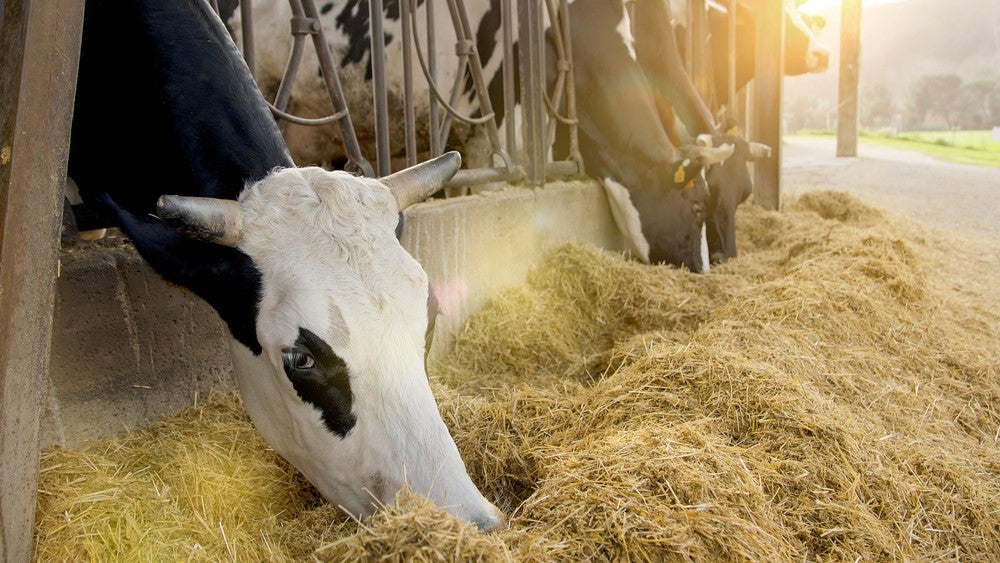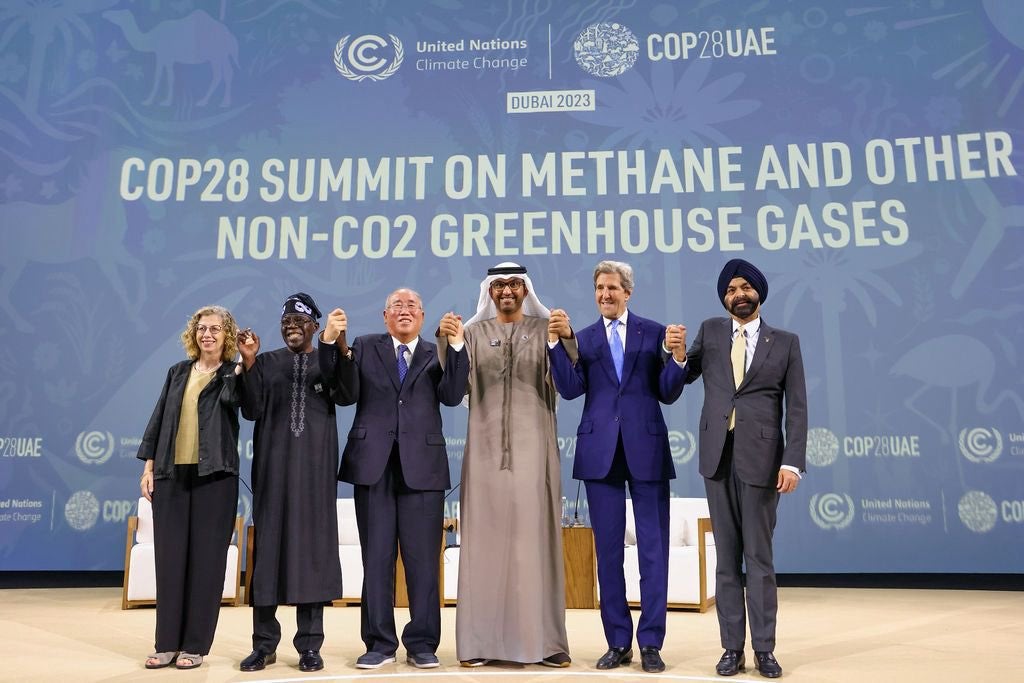The COP28 climate summit, which started in Dubai yesterday (30 November), will see the publication of a roadmap to 1.5°C for global food systems by the United Nations’ Food and Agriculture Organization (FAO).
The guidance will warn that the world’s most developed nations must curb their meat consumption to reduce greenhouse gas (GHG) emissions and bring the global agrifood industry in line with the Paris Agreement.
Hosted by the United Arab Emirates, COP28 will run until 12 December, although often discussions at the annual summit continue past the official end date.
On 10 December, the day will be dedicated to food systems, with consideration given to the growing, processing, distributing, consuming and disposing of food. To highlight the environmental implications of food production, the catering will be two-thirds plant-based throughout the conference.
Farming processes account for around one-third of total GHG emissions. Livestock farming is the biggest contributor, comprising around 54% of total agriculture emissions during the 2018-20 base period. Research has suggested there has been a 500% increase in meat consumption between 1992 and 2016, driving an industry that contributes to the release of methane as well as mass deforestation and subsequent biodiversity loss.
The roadmap will suggest that countries that overconsume meat should reduce their intake, and thus their associated GHG emissions, while methods of livestock farming in developing countries will also be reconsidered, according to the FAO.
World meat consumption continues growth
A recent report by the FAO noted that world meat production in 2023 was expected to reach 365 million tons carcass weight equivalent, representing a 0.8% increase from 2022. It also identified the countries seeing the most growth in the industry.
“The increase reflects an expected growth in production in Asia, mainly of pig meat in China, due to increased slaughter as non-competitive, small-scale farmers exit the sector amid low prices and squeezed profit margins,” the report reads. “Production is also likely to expand in South America, notably Brazil, due to lower feed costs, and in Oceania, due to an expanded supply of slaughter-ready animals and increased export demand.”
However, the report also pointed out decreased production in some areas, stating: “These production gains will likely be partially offset by lower outputs in Europe, mainly in the EU, because of animal diseases and the continued drop in herd numbers, and in Africa, as drier conditions continue to impact feed and fodder availabilities and conflicts disrupt livestock operations. Northern America is also experiencing output declines due to lower producer returns and relatively high feed costs.”
The expected global food systems’ road map will address the relationship between meat consumption and GHG emissions. It follows the UAE’s call for governments to sign the Declaration on Food Systems, Agriculture and Climate Action in July 2023, which would integrate food systems and agriculture into national climate agendas.
The push for cleaner food production practices has been reflected in company filings tracked by GlobalData, Just Food’s parent company. Despite a dip in 2022, there has been a significant overall increase in the frequency of discussion around the environment and climate change since 2016.
Our signals coverage is powered by GlobalData’s Thematic Engine, which tags millions of data items across six alternative datasets — patents, jobs, deals, company filings, social media mentions and news — to themes, sectors and companies. These signals enhance our predictive capabilities, helping us to identify the most disruptive threats across each of the sectors we cover and the companies best placed to succeed.















